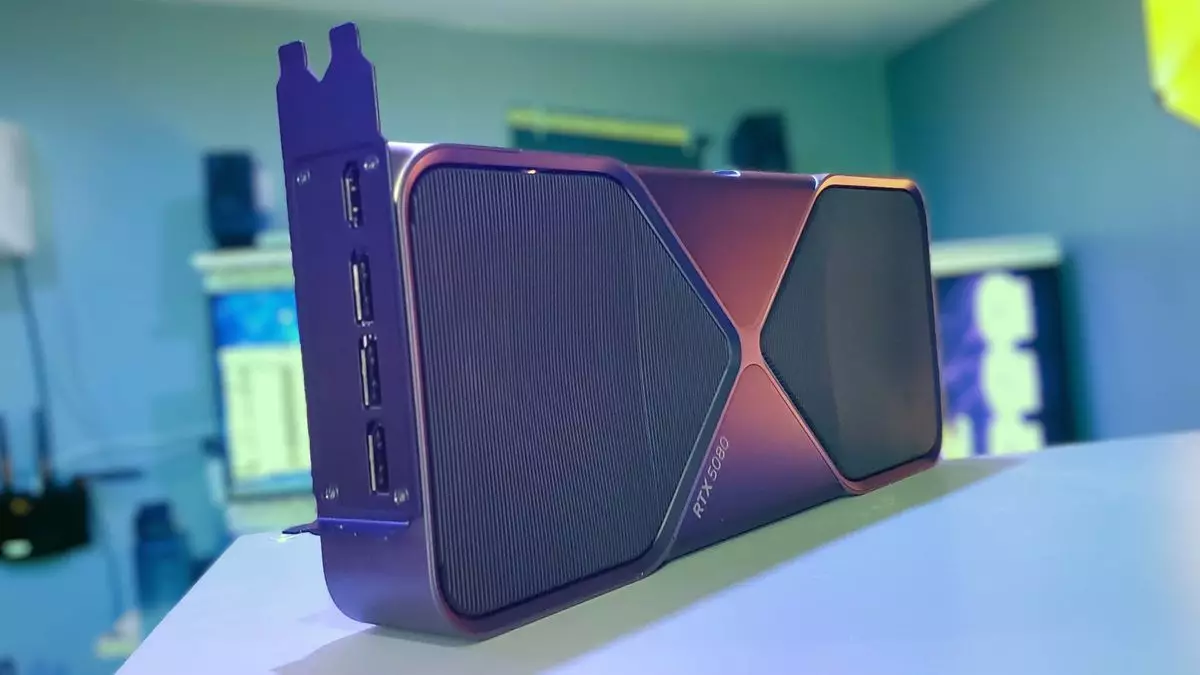The highly anticipated launch of Nvidia’s RTX 50-series graphics cards has led to a whirlwind of opinions within the gaming community. While hailing the new GPUs as “the most powerful graphics core you can jam into a gaming PC,” some critics deem them “strangely unexciting” or dismissive, interpreting the launch as a “paper release.” Despite these mixed sentiments, one undeniable fact remains: the demand for these cards has been staggering, a point emphasized by Newegg, which reported a near-instantaneous sell-out of its RTX 50-series stock.
The release of the RTX 50-series was met with heightened excitement among consumers and gamers alike. Newegg disclosed that it sold out its entire allotment in “record time,” with the faster clearance of inventory indicative of the overall interest surrounding Nvidia’s latest offerings. Notably, the retailer revealed that the majority of its RTX 50-series inventory was snatched up within a mere five minutes, while the complete sellout occurred at the 20-minute mark. This phenomenon illustrates a significant shift in consumer behavior: gamers are eager to invest in the latest technology, often willing to act quickly to secure coveted hardware.
As someone who closely monitors these launches, I observed a similar trend across other US and UK retailers. Many experienced similar immediate sell-outs, adding credence to Newegg’s claims. One particularly interesting facet of this release was Newegg’s lineup of various prebuilt gaming PCs equipped with the new GPUs. Companies like ABS, iBuyPower, and Skytech contributed to the prolonged sellout duration, proving that demand extended beyond the GPUs themselves to the systems that harness their power.
Among the new GPUs, one model stood out: the RTX 5080. Data suggests that it has garnered more interest compared to its pricier counterpart, the RTX 5090. This trend is not only logical, considering the 5080’s more moderate price point, but it also raises questions about what the gaming community prioritizes when investing in hardware. Are gamers prioritizing performance-to-price ratios over cutting-edge specifications, or do we see a divide in consumer sentiment based on gaming needs versus luxury?
The RTX 5080, aimed at mainstream gamers, ultimately provides value without completely breaking the bank, while the 5090 beckons to enthusiasts willing to invest more significantly for top-tier performance. Comments from Newegg’s Vice President of Product Management, Jim Tseng, somewhat encapsulate this thinking: “The overwhelming demand reaffirms the gaming and PC community’s enthusiasm for the very best technology.”
With such overwhelming demand, a looming question remains: when will consumers be able to purchase the RTX 50-series cards again? Following the initial sellout, Newegg quickly announced a second inventory release within hours, emphasizing a proactive approach to restocking and meeting customer demand. This initiative reflects a critical understanding of the marketplace resonating within retail spaces for gaming technology.
Retailers and manufacturers must navigate the delicate balance of supply and demand, continuously monitoring trends to provide consumers with what they seek. For many, staying informed through updates on social media channels or dedicated “Where to buy” articles could mean the difference between acquiring a long-desired GPU or facing another period of frustration. This reinforces the significance of agility in retail operations, especially in the gaming hardware sector.
While the RTX 50-series launch may have sparked contrasting opinions about the level of excitement relative to performance, one cannot neglect the compelling narrative of demand intensity. As gaming technology advances and consumer preferences evolve, Nvidia’s ability to capitalize on this swath of enthusiasm is crucial. Whether you are among the fortunate who secured a new GPU or someone patiently awaiting restocks, the journey of acquiring high-performance gaming technology remains as riveting as the technological advancements themselves. With the promise of subsequent batches, the gaming community is on edge, anticipating future developments in both hardware and availability.


Leave a Reply